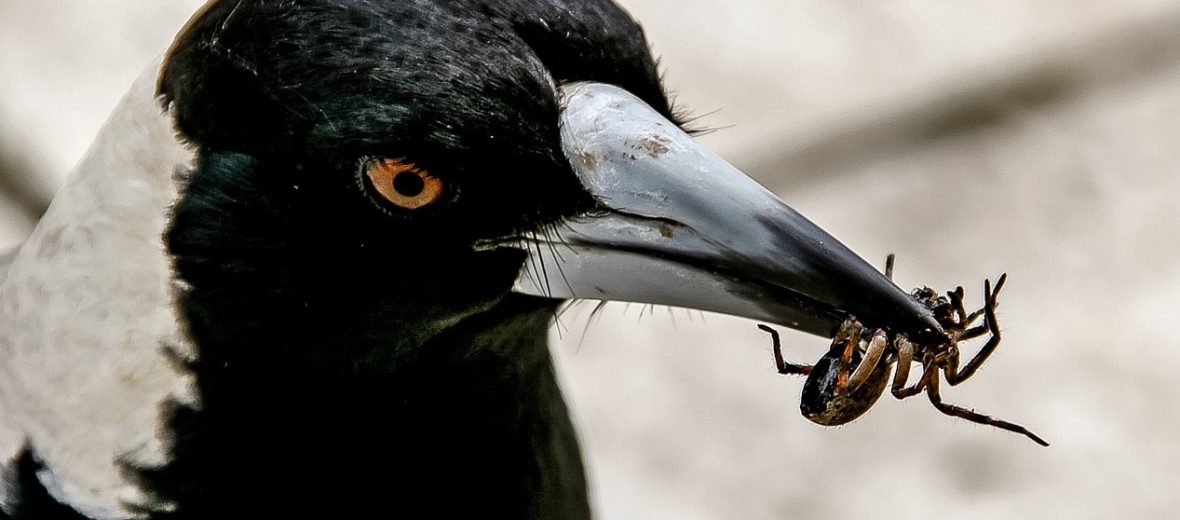
There are not many birds that are as recognized by Australians as the Australian magpie. There are few places in Australia where magpies don’t live. The species’ familiarity is probably due to its pleasing song and for its tendency to swoop down at people during its springtime mating and nesting season and even recognize it’s own image in a mirror. These birds are listed as Least Concern by the IUCN.
First the Stats…
Scientific name: Cracticus tibicen
Weight: Up to 12 ounces
Length: Up to 17 inches
Wingspan: Up to 2.8 feet
Lifespan: Up to 25 years
Now on to the Facts!
1.) It has been reported in the past that magpies will try and steal your jewelry. This was never backed up scientifically. In fact, it has been observed that magpies may actually be scared of shiny objects.
2.) Even though they look different, magpies actually belong to the family Corvidae, a group of birds that includes crows, rooks, ravens, jays, jackdaws, choughs, nutcrackers, and treepies.
3.) These birds have shown the ability to recognize their own reflections in mirrors. This is something that was originally thought to be a characteristic only found in humans, 4 ape species (including the macaques), bottlenose dolphins, and Asian elephants.
4.) Magpies typically eat insects, small rodents, grains, and berries. They have also been known to steal bird eggs, and even eat young chicks!
5.) The Australian magpie can sometimes be seen along the ground searching for a variety of food. These birds will also take handouts from people and will frequently venture into open houses to beg for food!
But wait, there’s more on the Australian magpie!
6.) A group of magpies is called a parliament.
7.) Magpies occupy the same territory for their entire life. Once they find a habitable area, they will stay there.
Did you know…?
Scientists have run various experiments using face masks and found that magpies recognize other magpies and people by their faces.
8.) Magpies will typically mate for life. However, if a male is killed while their young are still in the nest, the female will take a new partner. Hey, it’s time to move on.
9.) Although not quite as vocally skilled as the lyrebird, magpies are still excellent mimics. They will impersonate a wide range of other birds and even car alarms, dogs, and cameras.
10.) Although they usually wake people up with their morning songs, on a full moon or under a brightly lit street they’ll sometimes sing all night long.
Now a Short Australian Magpie Video!
Also, check out the Critter Science YouTube channel. Videos added frequently!
Want to suggest a critter for me to write about? Let me know here.




Leave a Reply